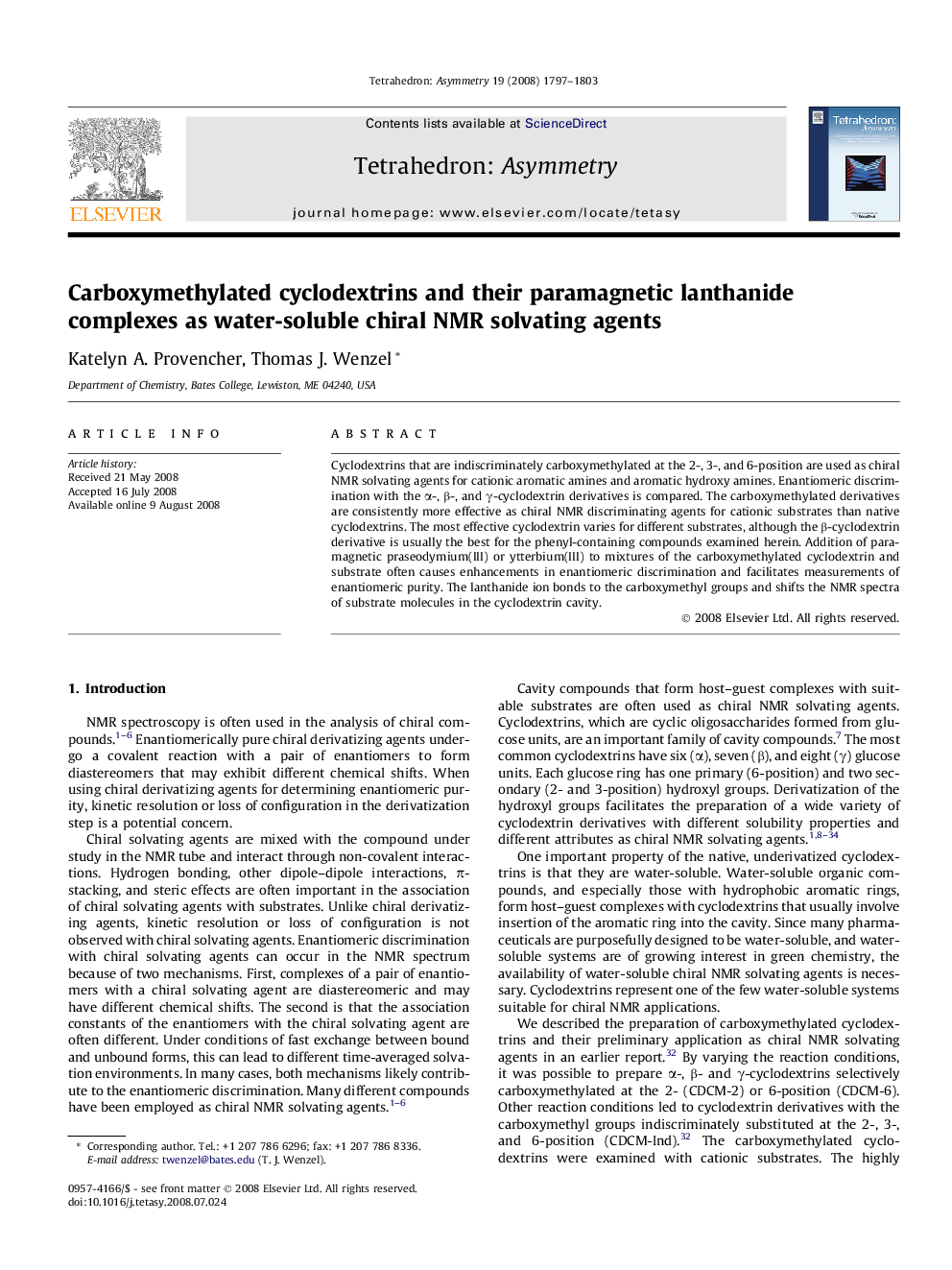| Article ID | Journal | Published Year | Pages | File Type |
|---|---|---|---|---|
| 1345008 | Tetrahedron: Asymmetry | 2008 | 7 Pages |
Cyclodextrins that are indiscriminately carboxymethylated at the 2-, 3-, and 6-position are used as chiral NMR solvating agents for cationic aromatic amines and aromatic hydroxy amines. Enantiomeric discrimination with the α-, β-, and γ-cyclodextrin derivatives is compared. The carboxymethylated derivatives are consistently more effective as chiral NMR discriminating agents for cationic substrates than native cyclodextrins. The most effective cyclodextrin varies for different substrates, although the β-cyclodextrin derivative is usually the best for the phenyl-containing compounds examined herein. Addition of paramagnetic praseodymium(III) or ytterbium(III) to mixtures of the carboxymethylated cyclodextrin and substrate often causes enhancements in enantiomeric discrimination and facilitates measurements of enantiomeric purity. The lanthanide ion bonds to the carboxymethyl groups and shifts the NMR spectra of substrate molecules in the cyclodextrin cavity.
Graphical abstractFigure optionsDownload full-size imageDownload as PowerPoint slide
